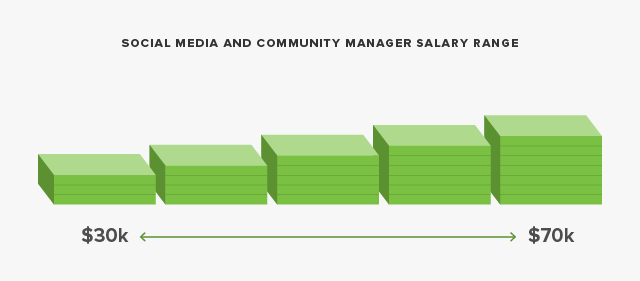As I reach the end of my E-Marketing course #sauder464, many of my classmates and I must be wondering if it is worth it? The median salary is around $43,400. Interestingly, the salary increases respective to the number of employees in the business; for those up to 100 employees, salary averages to $40,900 and for those above 1,000 averages to $58,400.
Bellow are some figures and competitive yearly salaries for the vast roles within digital marketing:
- Internet Marketing Director → $97,400
- Digital Strategist → $63,800
- Content Marketing Manager → $63,600
- Marketing Manager → $62,900
- Public Relations Manager → $61,100
- Online Community Manager → $47,800
- Social Media Strategist → $46,800
- Online Marketing Specialist → $45,600
- Digital Media Specialist → $44,000
- Social Media Manager → $43,800

A career path in social media can certainly promise a nice and lucrative path. It is dutiful to note that entry-level positions start at around $30,000 with median salaries being around $50,000 and $70,000. As seen above, however, as a social media marketer further develops its skills and expertise, it can raise to close to a six figures salary. There certainly is great prospect for social media marketers as more the trend for corporate adoption just keeps growing and higher demand appears.
Nonetheless, there are also some drawbacks and misconceptions about social media. Given the every rising instant connectivity, the job no longer works within the confines of a 9-to-5, and more importantly, that it is not all random, but rather there strategy and analysis involved that drive each tweet, post and social media campaigns.
Sources:
– 10 Top Jobs by Salary for Social Media Pros
– I want to be a social media manager, what will my salary be?
Further Readings:
– Average Salary for Skill: Social Media Marketing
– How Much Should You Pay a Social Media Manager?
 Facebook has been working on a new way to advertise to customers in a way that customers want to be engaged with – through an app-like experience! These new format consist of a normal news feed ad that once clicked on, it leads to a personalized blank canvas for marketers to create compelling experiences to customers.
Facebook has been working on a new way to advertise to customers in a way that customers want to be engaged with – through an app-like experience! These new format consist of a normal news feed ad that once clicked on, it leads to a personalized blank canvas for marketers to create compelling experiences to customers.

 Facebook’s
Facebook’s